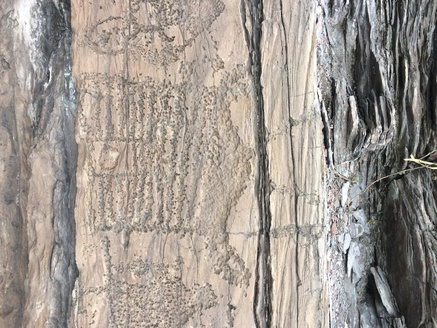“We Scythians have no cities or fields (…) We have the tombs of our fathers,” are the words Herodotus puts in the mouth of Scythian King Idanthyrsos. It’s an image that has persisted to this day. Not only the father of historiography and his Greek successors, but also the chroniclers of the Chinese Zhou and Han dynasties characterized their neighbours as highly mobile nomads who were independent of any settlement and differed from the sedentary peoples who possessed writing and with whom they were often at war. Their large burial mounds and stone monuments rise up from the steppes and have fascinated archaeologists for centuries. When substantive “nomadic” settlements were discovered, they were interpreted as extraordinary responses to specific environmental conditions and socio-political events.
It is therefore understandable that the archaeology of the nomadic peoples of Eurasia in the Iron Age is largely an archaeology of burials, and the narrative of it was defined by the buried elite. The research group led by archaeologists Dr Peter Hommel, Dr Rebecca O’Sullivan, and Dr Yury Esin is shifting the focus to the life of the nomads in the Iron Age, because on closer inspection it has emerged that it is possible to identify not only the burial mounds and monuments but also prehistoric settlements. And what is more, they were actually widespread. Nevertheless, to date almost nothing is known of the life of the simple folk who inhabited these settlements.
The project’s goal is to examine the remains of everyday life and the surroundings of people in south Siberia in the 1st century BCE in order to spotlight continuities and changes in the nomadic societies. An opportunity to do this is to be found in the Siberian part of Russia in the Minusinsk Basin. The depression is encircled by mountains and is a rich microcosm of the steppe, renowned for its Iron Age archaeological finds – not least for its burial mounds that are enclosed in stone. Several hundred of these sites have been investigated, but hardly any of the settlements.
On the basis of a preliminary campaign in 2018, Dr Hommel’s team will excavate two very different settlements: one smaller (Bol’shoy Sakhsar-2) and one larger (Uzun Khir). Both sites share an architectural style and are both in the areas with a high density of settlements and burial mounds about which as good as nothing is known. For this reason, the excavations will be combined with a broad-ranging study of the vicinity in order to gather the necessary date on the countryside and the habitation structure. This will then be rounded out by laboratory analyses – including flotation to secure bioarchaeological material. In this way, the world of the Iron Age inhabitants will become visible: the building structures, the seasonality of habitation, their crafts and nutrition, and possibly also differences in their access to and production of resources.
The project will involve the local population in order to classify the finds in terms of the region’s history. In collaboration with experts for folklore and historical ethnography, a picture will therefore hopefully arise of land usage and habitation strategies in the region that also considers the changing relationship of the shepherds to their heritage.
Locals will also participate in the work of excavation and in preparing corresponding visual materials and information panels. The research findings will be presented at specialist conferences and published in a series of specialist articles.




